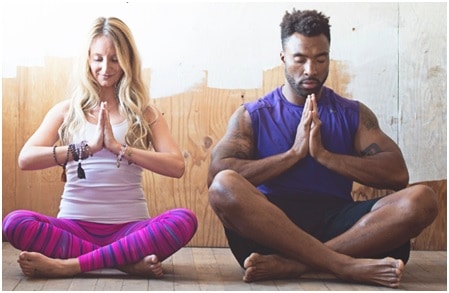Yin Yoga has become a beloved practice for those seeking a slower, meditative approach to yoga. Unlike the more dynamic yoga styles that target the muscles, Yin Yoga focuses on deeper connective tissues, encouraging release, relaxation, and increased flexibility. As more students discover the benefits of Yin, the demand for skilled Yin Yoga teachers grows.

A comprehensive Yin Yoga teacher training program equips instructors not only with techniques but also with the understanding necessary to guide students through this deeply therapeutic practice. Here, we’ll explore the essential elements that a robust Yin Yoga teacher training program should cover.
Anatomy and Physiology for Yin Yoga
While many yoga styles emphasize building muscle strength, Yin Yoga’s focus is on the body’s connective tissues—ligaments, fascia, and joints. Therefore, a comprehensive yin yoga teacher training should include specialized anatomy and physiology segments that cover the unique demands of this practice.
Teachers-in-training should learn about the structure and function of connective tissues, how they respond to gentle stress, and the role of long-held postures in supporting joint health. Understanding anatomy in the context of Yin Yoga also helps teachers address the varying body types and abilities of their future students, ensuring safe and effective guidance for everyone in the room.
The Meridians and Energy Channels
An important aspect of Yin Yoga is its connection to Traditional Chinese Medicine (TCM), which holds that specific energy channels, or meridians, run throughout the body. Yin Yoga postures are believed to stimulate these meridians, enhancing the flow of “qi” (life energy) and promoting overall wellness.
A quality teacher training program will delve into the basics of meridian theory, introducing trainees to the main energy channels targeted in common Yin Yoga poses. Understanding the meridians and their associated organs allows teachers to create classes that support various physical and emotional needs, giving them a versatile toolkit for tailoring their sessions.
Techniques and Methods for Yin Yoga Poses
Yin Yoga is unique in its emphasis on stillness and longer-held postures. This approach may seem simple, but guiding students safely into stillness requires a deep understanding of technique. In a well-rounded Yin Yoga teacher training, participants should learn how to properly cue postures, how to use props, and how to modify poses to suit different body types and flexibility levels. Detailed instruction on the techniques of Yin Yoga allows future teachers to guide students through each posture with confidence, supporting alignment and comfort while avoiding strain.
The Importance of Breath and Mindfulness
Mindfulness and breathwork are cornerstones of Yin Yoga, setting it apart from more active forms of yoga. A comprehensive training program will introduce teachers-in-training to various breathing techniques, breathwork course, and mindfulness practices, showing them how to weave these elements into each class. By cultivating an awareness of breath and promoting a mindful approach, Yin Yoga teachers can create an environment where students feel safe to explore their inner experience. Trainees learn how to gently remind students to focus on their breath and stay present, fostering a meditative state that’s key to the benefits of Yin Yoga.
Sequencing Yin Yoga Classes
Creating a balanced and effective Yin Yoga sequence requires skill and thoughtfulness. A good teacher training program will teach participants how to sequence classes with intention, ensuring that postures flow together naturally and promote overall relaxation. Teachers will learn the importance of choosing postures that complement one another and how to time each pose to maximize the benefits. Trainees will also explore how to adjust sequences to accommodate themes, seasonal changes, or specific energetic goals. With these skills, new Yin Yoga teachers can craft sequences that offer a harmonious, therapeutic experience.
The Role of the Teacher in Holding Space
One of the most important yet subtle elements of teaching Yin Yoga is the ability to “hold space” for students. Unlike dynamic yoga styles, Yin encourages vulnerability, stillness, and introspection, which can bring emotions to the surface. A well-designed teacher training will address the role of the teacher as a supportive, calm presence, teaching trainees how to create a safe, non-judgmental environment. This aspect of training also includes learning how to communicate effectively, guide with empathy, and manage the energy in the room, all of which help students feel supported in their journey through the practice.
Beyond technique and theory, Yin Yoga teachers need to embrace the mindset that Yin Yoga promotes—one of patience, acceptance, and compassion. A quality training program encourages future teachers to embody these qualities themselves, both on and off the mat. By fostering self-awareness, patience, and mindfulness in their own lives, Yin Yoga teachers can bring an authentic and compassionate approach to their teaching. For anyone looking to deepen their own practice or help others find peace and balance through Yin Yoga, a well-rounded training program is the first step on a fulfilling journey.




